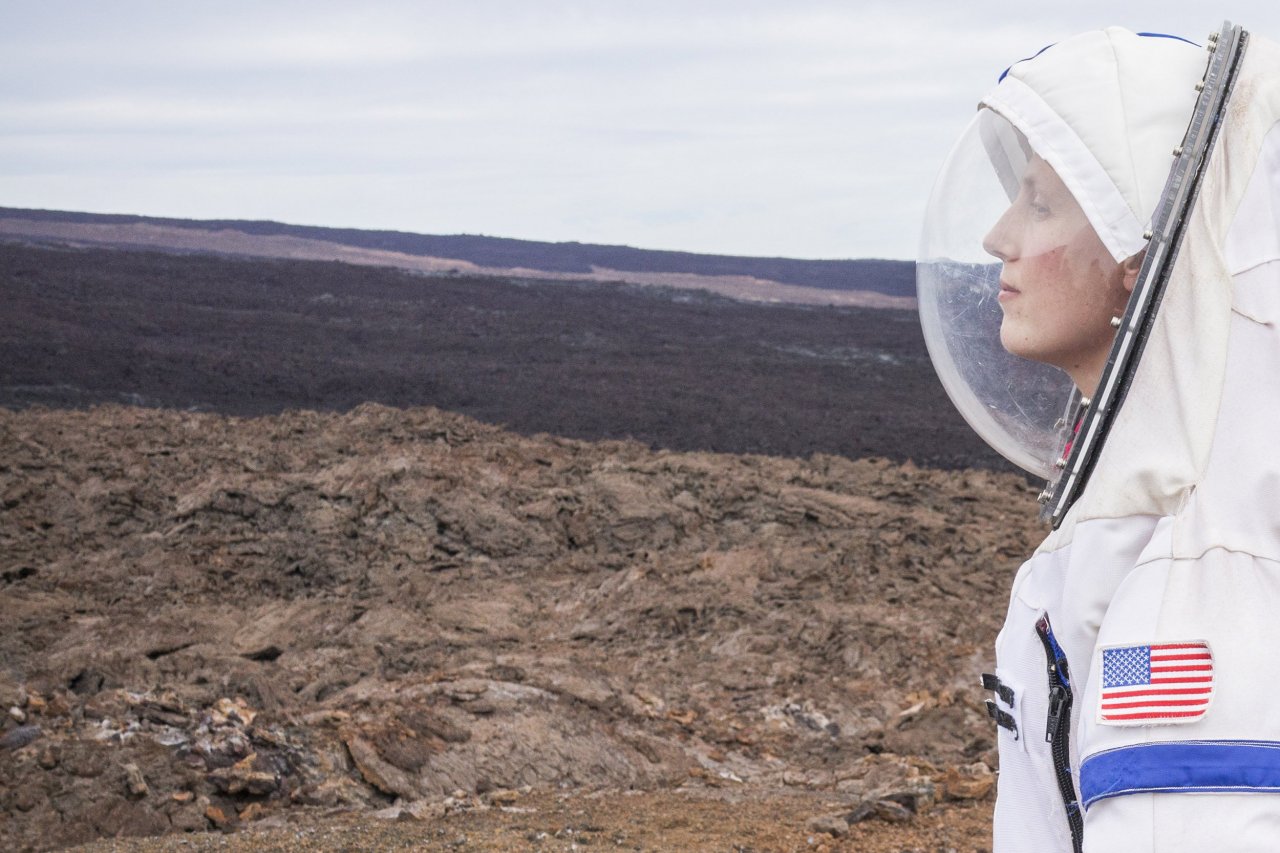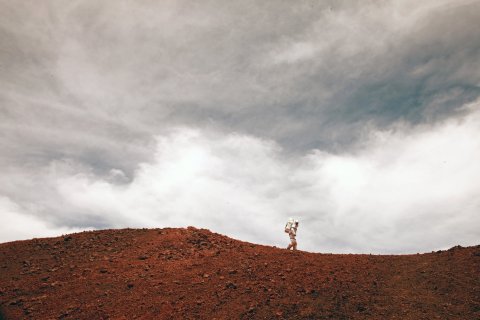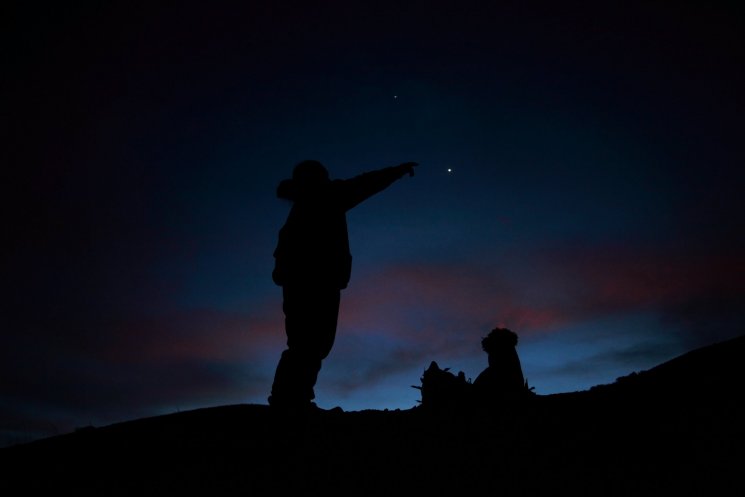
Zak Wilson thinks that in the near future, there will be humans on Mars. He also thinks there's a pretty good chance he'll be one of them.
He's not a candidate for the Mars One mission, the plan that Dutch entrepreneurs have put forth to train and send regular citizen applicants on a one-way trip to Mars in 2026, nor is he a dreamer. He's a materials engineer who recently concluded an eight-month experiment to test what happens to humans during the type of long-duration space travel required to make it to the red planet.
The experiment was part of NASA's Hawaii Space Exploration Analog and Simulation, a series of studies to test how long-term isolation and confinement may affect crew psychology and team performance. HI-SEAS began in 2013, and three missions have been concluded; the fourth began on August 28 and will last for 365 days. (Twelve months is still far shorter than the length of a real expedition to Mars. Most actual mission profiles are 2.5 to 3 years long.) Each study puts six astronauts-to-be in an isolated 1,000-square-foot dome habitat, in living conditions that are as Martian as they can be on Earth: the slopes of the Mauna Loa volcano on Hawaii Island.
The Big Island, as it's often called, is barren, dotted with mountains and ridges covered in volcanic red rocks. As on Mars, "there are wide-open plains and a lot of craters," says Sophie Milam, a graduate student in engineering at the University of Idaho and, at 27, the youngest crew member on HI-SEAS's third mission. Then there's Mauna Loa—the largest volcano on Earth when measured from the base to the top and believed to be second only to Mars's Olympus Mons in the entire solar system.
A major component of the experiments is exposing human guinea pigs to extreme scarcity. For example, they have access to only a very limited supply of water (each participant gets to shower seven minutes per week, max), and their food is exclusively dehydrated—unless they can come up with their own way to grow fresh produce. The crew from the recently concluded mission included a sustainability and indoor gardening expert, Martha Lenio, who managed to grow a few salutary tomatoes. They also are forced to endure the type of lackluster communication they'd experience on Mars. Sending and receiving email, for example, has an artificial 20-minute delay.
Though it's impossible to fully replicate the low gravity and the magnetic fields on the Martian surface, extravehicular activities, or EVAs, gave the researchers a taste of what exploring such a harsh planet would be like. "When you walk around in a space suit, it is very difficult judging where your limits are," says crew member Neil Scheibelhut. "You feel this force on you, and you are wondering why you are leaning that way, and suddenly you realize that this is the wind, but you can't feel it."
Each researcher involved in the mission reacted differently to confinement. Jocelyn Dunn, a Purdue University industrial engineering Ph.D. candidate, says she often found herself longing for just a few minutes entirely to herself. Most of the day is spent in the company of other team members, and the material used for the construction of the dome is so thin that even through a closed door, you can hear the team's activity outside. Spending so much time with such a small group can also create intense feelings of loneliness. "It's very isolated from the rest of the world," says Allen Mirkadyrov, a NASA aerospace engineer and crew member. "Six people is not enough to make you feel like you are part of a community or a society." Then there were the prosaic, distinctly earthbound experiences they missed: the feel of sunshine on the skin, the smell of grass, the taste of steak and the songs of birds. "We haven't seen any animal in eight months," says Wilson.

In many ways, these varying individual reactions are the point of the experiment. Some physical and psychological challenges of long-term space travel are obvious (food, isolation), but others are unpredictable until you get actual people out in the field—or, in engineering-speak, perform "analog research."
"Mars is the ultimate sustainability project," says Lenio. "Living on Mars means coming up with a way to recycle every single resource: air, water, food and even waste. We forget that we have to recycle everything because Earth recycles it for us, but on Mars you don't have that luxury. So if we can figure out a way to do this on Mars, for sure it will have implications here on Earth."















